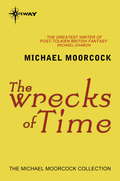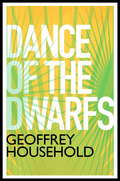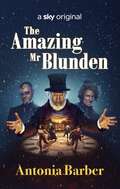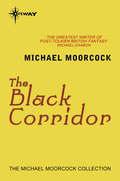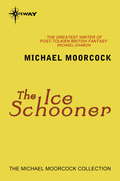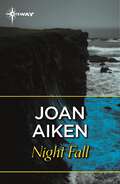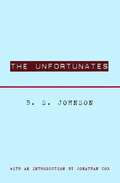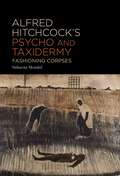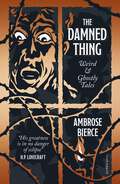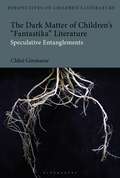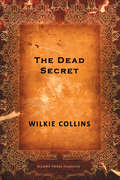- Table View
- List View
The Wrecks of Time
by Michael MoorcockEarth zero to Earth fifteen - which was the real one?What the inhabitants of Greater America didn't realize was that theirs was the only inhabited landmass, apart from one island in the Philippines. They still talked about foreign countries, though they would forget little by little, but the countries were only in their imaginations, mysterious and romantic places where nobody actually went..That was the way it was on E-3, one of the fifteen alternate Earths that had been discovered through the subspace experiments.Professor Faustaff knew that these alternate earths were somehow recent creations, and that they were under attack from the strange eroding raids of the mysterious bands known as the D-Squads. But there were tens of millions of people on those Earths who were entitled to life and protection-and unless Faustaff and his men could crack the mystery of these worlds' creation and the more urgent problem of their impending destruction, it would mean not only the end of these parallel planets, but just possibly the blanking out of all civilization in the universe.
Dance of the Dwarfs
by Geoffrey HouseholdA tale of nightmare set at the edge of the Amazonian jungle - 'A superb horror story' - New York TimesAt the edge of the Amazonian jungle, Dr Owen Dawnay has set up an agricultural station. It's a remote place, isolated from the world, and home to a group of half-Indian cattlemen.Dawnay is puzzled by the cattlemen's apparent fear of the dark. Until he learns of the elusive dwarfs who are supposed to dance among the trees by moonlight. His scientific brain urges him to confront the unknown, but Dawnay has entered a realm of nightmare, one that science cannot explain...
The Amazing Mr Blunden: Soon to be a Christmas Sky Original Film, starring Mark Gatiss, Simon Callow and Tamsin Greig
by Antonia BarberA CHRISTMAS SKY ORIGINAL FILM, STARRING MARK GATISS, SIMON CALLOW AND TAMSIN GREIGAN ENTHRALLING GHOST STORY WITH A TIME-TRAVELLING TWIST'When you come to the house, you will hear strange tales. They will tell you in the village that it is haunted, but you must not be afraid. When the time comes ... you will know what to do.'Mr Blunden's words echoed through Lucy's ears as she explored the house. It was such an old house that it seemed to Lucy as if all the past was gathered up inside it as if in a great box; as though it had a life of its own that continued to exist just beyond the reach of her eyes and ears. Did Mr Blunden, who went out of his way to offer their mother the job as caretaker, mean to help or hurt them? Could she and her brother Jamie really help those troubled ghosts from another age?'Charming, magical and life-affirming, Antonia Barber's clever and moving tale has become a much-loved favourite. The Wheel of Time spins - and off we go into an unforgettable adventure!' MARK GATISS
The Black Corridor
by Michael MoorcockThe world is sick. The Forces of Chaos have energised the planet. Leaders, führers, duces, prophets, visionaries, gurus, and politicians are all at each others' throats. And Chaos leers over the broken body of Order.So Ryan freezes his family into suspended animation and sets off for the planet Munich 15040, five years distant. There he will re-establish Order in a New World - and create a happier, healthier, saner and more decent society with the ones he loves.But they are suspended. And they cannot talk. And he is alone in space. And he has been travelling for three years. And he will still be travelling two years hence, and he cannot see his destination, and he is ALONE and LOST and CRACKING UP...
The Ice Schooner
by Michael MoorcockThe world lay frozen under a thousand feet of ice. Only in the Eight Cities of the Matto Grosso did men still live, hunting the wary ice whales for meat and oil, and following the creed of the Ice Mother which foretold the end of all life in ultimate cold.But legend told of a city far to the north - fabled New York - whose towers rose above the ice, whose crypts held the forgotten lore that might bring warmth to Earth once again. In the best ice ship in the Eight Cities, Konrad Arflane embarked on the impossible voyable to New York - an odyssey of incredible peril and adventure with a shattering discovery at the journey's end...
Night Fall
by Joan AikenWhen Meg Frazer's actress mother is killed in a Hollywood accident, nineteen-year-old Meg finds it hard to adapt to life in Britain with her cold, distant father . . . and at night she is haunted by a strange dream of a face which she is sure has something to do with her past.Meg follows a clue from the past to a remote Cornish Village. There she becomes involved in a nightmare web of terror and suspense . . . She meets a young man called Toby, who is different from her staid fiancé, but is he wrapped up in the secrets is unravelling?
The Unfortunates
by B S JohnsonA sports journalist, sent to a Midlands town on a weekly assignment, finds himself confronted by ghosts from the past when he disembarks at the railway station. Memories of one of his best, most trusted friends, a tragically young victim of cancer, begin to flood through his mind as he attempts to go about the routine business of reporting a football match. B S Johnson’s famous ‘book in a box’, in which the chapters are presented unbound, to be read in any order the reader chooses, is one of the key works of a novelist now undergoing an enormous revival of interest. The Unfortunates is a book of passionate honesty and dark, courageous humour: a meditation on death and a celebration of friendship which also offers a remarkably frank self-portrait of its author.
Alfred Hitchcock’s Psycho and Taxidermy: Fashioning Corpses
by Subarna MondalThere are numerous scholarly works on Alfred Hitchcock's Psycho (1960). Some of these works have explored its Gothic potentials. However, no detailed effort has yet been made to explore one of its major motifs – taxidermy. Taxidermy as an art of corporeal preservation has effectively been used in mainstream body horror films years after Psycho was released. Yet Psycho was one of the first films to explore its potentials in the Gothic genre at a time when it was relegated to a low form of art. Alfred Hitchcock's Psycho and Taxidermy focuses on taxidermy as a cultural practice in both Victorian and modern times and how it has been employed both metaphorically and literally in Hitchcock's films, especially Psycho. It also situates Psycho as a crucial film in the filmic continuum of body horrors where death and docility share a troubled relationship.
Aventuras de Arthur Gordon Pym
by Edgar Allan PoeAquí encontraremos una serie de aventuras con el toque característico de Poe. Artur es un incansable joven lleno de deseos de viajar y conocer, pero en todos sus viajes debe enfrentar peligros, carencias y estar al borde de la muerte. El terror que nos transmite Poe no es el típico del siglo veinte, sangre, desmembramientos, ni nada por el estilo; es una manera más exquisita de encaminarnos al sufrimiento por zozobra. El peligro es el ingrediente principal pues coloca a sus personajes en lucha contra la naturaleza, el hambre, la inclemencia y por supuesto los seres reales e imaginarios que toda historia de terror debe contener.
Blood and Black Lace (Devil's Advocates)
by Roberto CurtiMario Bava’s Blood and Black Lace (1964) is a legendary title, and is commonly considered as the archetypal giallo. A murder mystery about a faceless and menacing killer stalking the premises of a luxurious fashion house in Rome, Blood and Black Lace set the rules for the genre: a masked, black-gloved killer, an emphasis on graphic violence, elaborate and suspenseful murder sequences. But Blood and Black Lace is first and foremost an exquisitely stylish film, full of gorgeous color schemes, elegant camerawork, and surrealistic imagery, testimony of Bava’s mastery and his status as an innovator within popular cinema. This book recollects Blood and Black Lace’s production history, putting it within the context of the Italian film industry of the period and includes plenty of previously unheard-of data. It analyzes its main narrative and stylistic aspects, including the groundbreaking prominence of violence and sadism and its use of color and lighting, as well as Bava’s irreverent approach to genre filmmaking and clever handling of the audience’s expectations by way of irony and pitch-black humor. The book also analyzes Blood and Black Lace’s place within Bava’s oeuvre, its historical impact on the giallo genre, and its influential status on future filmmakers.
The Blood on Satan's Claw (Devil's Advocates)
by David Evans-PowellWidely regarded as one of the foundational 'Unholy Trinity' of folk horror film, The Blood on Satan's Claw (1971) has been comparatively over-shadowed, if not maligned, when compared to Witchfinder General (1968) and The Wicker Man (1973). While those horror bedfellows are now accepted as classics of British cinema, Piers Haggard's film remains undervalued, ironically so, given that it was Haggard who coined the term 'folk horror' in relation to his film. In this Devil's Advocate, David Evans-Powell explores the place of the film in the wider context of the folk horror sub-genre; its use of a seventeenth-century setting (which it shares with contemporaries such as Witchfinder General and Cry of the Banshee) in contrast to the generic nineteenth-century locales of Hammer; the influences of contemporary counter-culture and youth movement on the film; the importance of localism and landscape; and the film as an expression of a wider contemporary crisis in English identity (which can also be perceived in Witchfinder General, and in contemporary TV serials such as Penda's Fen).
The Cabin in the Woods (Devil's Advocates)
by Susanne KordThe Cabin in the Woods (2012), directed by Drew Goddard and co-authored by Goddard and Joss Whedon of Buffy-fame, was famously described by co-author Whedon as his ‘loving hate letter’ to horror. Interviews with Whedon reveal that his struggles with modern cinematic horror are not merely emotional, but intensely philosophical. This book is the first to read Cabin as a philosophical metatext that asks what horror offers audiences and why audiences accept. Like any good philosophy, the film offers no answers but raises questions: what ‘choices’ are possible in a pre-determined universe? How do we, the audience, see the victims of violence, and with what ethical consequences? And finally, the most fraught question of all: why do we keep looking?
Cape Fear (Devil's Advocates)
by Rob DanielMartin Scorsese’s Cape Fear (1991) opens with a shot of water and climaxes on a raging river. Despite, or perhaps because of, the film’s great commercial success, critical analysis of the film typically does not delve beneath the surface of Scorsese’s first major box office hit. As it reaches its 30th anniversary, Cape Fear is now ripe for a full appraisal. The remake of J. Lee Thompson’s 1962 Cape Fear was originally conceived as a straightforward thriller intended for Steven Spielberg. Author Rob Daniel investigates the fascinating ways Scorsese’s style and preoccupations transform his version into a horror epic. The director’s love of fear cinema, his Catholicism and filmmaking techniques shift Cape Fear into terrifying psychological and psychosexual waters. The analysis also examines the influence of Gothic literature and fairy tales, plus how academic approaches to genre aid an understanding of the film.
The Conjuring (Devil's Advocates)
by Kevin J. Wetmore Jr.In 2013 an apparently simple, back-to-basics scary movie transformed horror cinema for the rest of the decade. Based on the allegedly true story of the Perron family haunting and subsequent investigation by ghost hunters Ed and Lorraine Warren, The Conjuring has to-date spawned six sequels and prequels, making up a Conjuring ‘universe’ that has taken over a billion dollars around the world. The New York Times called The Conjuring ‘a fantastically effective haunted-house movie’ which, following his earlier film Insidious, established director James Wan as a force in horror cinema. In this Devil’s Advocates, horror scholar Kevin Wetmore examines what elements in the film are truly terrifying, how the filmmakers’ claims of being based on a true story hold up against the actual history of the haunting and the Warrens, and the relationship between The Conjuring and the many films in its universe. Along the way this book also considers how games, toys and dolls play an important role in the series, offers a critique of gender roles in the films, and asks the question, what is actually ‘conjured’ in The Conjuring? The delightful result is an in-depth, close reading of a film that uses standard horror tropes masterfully to create a truly scary film.
The Craft (Devil's Advocates)
by Miranda CorcoranIn recent years, teen witches have become highly visible figures. Fictional adolescent witches have headlined popular television shows like The Chilling Adventures of Sabrina (2018-2021) and American Horror Story: Coven (2013-2014), while their real-life counterparts have become minor celebrities on Instagram and TikTok. As such, now is the ideal time to revisit Andrew Fleming’s 1996 supernatural horror film The Craft. A cult favourite, especially amongst young women, The Craft is a story about teen witches that employs the conventions of occult horror to explore themes of power, friendship and responsibility. This entry in the Devil’s Advocates series is a deep dive into the history, production and meaning of The Craft. Situating The Craft within the teen horror revival of the 1990s, Miranda Corcoran analyses the film within the context of nineties popular and political culture, while also discussing its treatment of issues such as race, gender, sexuality and class. Delving into the history of witchcraft beliefs and persecutions, this book also investigates how The Craft modifies the archetype of the witch and traces the film’s influence on subsequent popular culture.
Creepshow (Devil's Advocates)
by Simon BrownReleased in cinemas in 1982, Creepshow is typically regarded as a minor entry in both the film output of George A. Romero and the history of adaptations of the works of Stephen King. Yet this lack of critical attention hides the fact that Creepshow is the only full collaboration between America’s bestselling author of horror tales and one of the masters of modern American horror cinema. Long considered too mainstream for the director of Dawn of the Dead (1978), too comic for the author that gave audiences the film versions of Carrie (1976) and The Shining (1980), and too violent for a cinemagoing public turning away from gore cinema in the autumn of 1982, Creepshow is here reassessed by Simon Brown, who examines the making and release of the film and its legacy through a comic book adaptation and two sequels. His analysis focuses on the key influences on the film, not just Romero and King, but also the anthology horrors of Amicus Productions, body horror cinema, and the special make up effects of Tom Savini, the relationship between horror and humor, and most notably the tradition of EC horror comics of the 1950s, from which the film draws both its thematic preoccupations and its visual style. Ultimately the book argues that not only is Creepshow a major work in the canons of Romero and King, but also that it represents a significant example of the portmanteau horror film, of the blending of horror and comedy, and finally, decades before the career of Zack Snyder (Watchmen, Man of Steel), of attempting to recreate a comic book aesthetic on the big screen.
Cruising (Devil's Advocates)
by Eugenio Ercolani Marcus StigleggerIn the fading atmosphere of the New Hollywood era, William Friedkin – the wunderkind director with an Academy Award for his cop drama, The French Connection (1971) who then scored an even bigger success with The Exorcist (1973) – began work on what would prove to be the most controversial film of his career: Cruising (1980). In the process he established a template for a sub-genre, the serial killer thriller, that would thrive long after his film had left theatres, having caused widespread offence among the very audience he'd hoped to appeal to, via a campaign mobilised by the counter-culture press. As such, Cruising can be read as a bitter farewell to the seventies and its cinema and industry. This Devil's Advocate dives deep into the phenomenon that is Cruising, examining its creative context and its protagonists, as well as examining its ongoing popularity as it turns 40 in 2020.
The Dark Matter of Children’s 'Fantastika' Literature: Speculative Entanglements (Bloomsbury Perspectives on Children's Literature)
by Dr Chloe GermaineFollowing the material turn in the humanities, this book brings perspectives from science and ecology into dialogue with children's fiction written and published in the UK and the USA in the 21st century. It develops the concept of entanglement, which originated in 20th-century quantum physics but has been applied to cultural critique, through a reading of Fantastika literature. Surveying a wide-ranging scope of literary texts, this book covers the gothic, fantasy, the Weird, and other forms of speculative fiction to argue that Fantastika positions entanglement as an ethical imperative that transforms our imaginative relationship with materiality. In so doing, it synthesizes perspectives from a similarly diverse range of areas, including ecology, physics, anthropology, and literary studies, to examine the storied matter of children's Fantastika as ground from which we might begin to imagine an as-yet-unrealised future that addresses the problems of our present.
Dawn of the Dead (Devil's Advocates)
by Jon TowlsonGeorge A. Romero’s Dawn of the Dead (1978) is celebrated both as a ‘splatter’ movie and as a satire of 1970s consumerism. One of the most financially successful independent films ever produced, Dawn of the Dead presented a strong vision to audiences of the time in terms of its excessive, often shocking violence. It challenged censorship internationally and caused controversy in the United States and the UK. The film created problems with distributors because of its length and its graphic content; with the MPAA who awarded it an ‘X’ in America (a rating usually reserved for pornography); with the BBFC in the UK who completely recut it; and in various European territories where it was released in several versions. Arguably, excess is at the heart of Dawn of the Dead, integral to its meaning: not only in its scenes of gore, its in-your-face social satire and its gaudy pop-kitsch style but in the production history of the film itself. This Devil’s Advocate explores the various ways in which Romero took Dawn of the Dead into areas of extremity during its scripting, production and distribution; and the responses of industry, censorship bodies, reviewers and audiences of the time to the film’s excesses. Taking the approach of a micro-historical study, Jon Towlson offers a close analysis of the film’s production context to explore the cultural significance of Dawn of the Dead as a ‘rebel text’ and an example of oppositional cinema.
The Dead Secret
by Wilkie CollinsWarned by a servant to avoid a particular room in her ancestral home, Porthgenna Tower, a wealthy heiress searches the room only to discover a long-held secret that has the potential to strip her of her inheritance. But when Rosamund Treverton reveals the secret of her birth, she is surprised by the reactions of those closest to her.
The Devils (Devil's Advocates)
by Darren ArnoldUndoubtedly the most notorious title in director Ken Russell’s controversial filmography, The Devils (1973) caused a real furor on its initial theatrical release, only to largely disappear for many years. This Devil’s Advocate considers the film’s historical context, as the timing of the first appearance of The Devils is of particular importance, its authorship and adaptation (Russell’s auteur reputation aside, the screenplay is based on John Whiting’s 1961 play of the same name, which was in turn based on Aldous Huxley’s 1952 book The Devils of Loudun), and its generic hybridity. Darren Arnold goes on to examine the themes prevalent in the film—this is the only film of Russell’s which the director considered to be political—and considers the representation of gender and sexuality, gender fluidity, and how sex and religion clash to interesting and controversial effect. He concludes by revisiting the film’s censorship travails and the various versions of The Devils that have appeared on both big and small screens, and the film’s legacy and influence.
